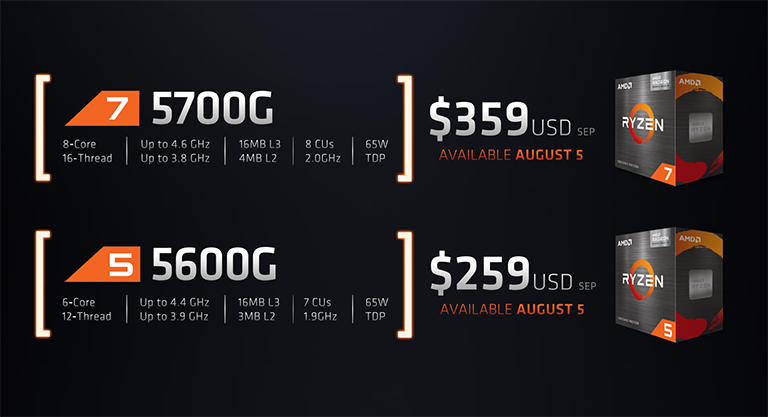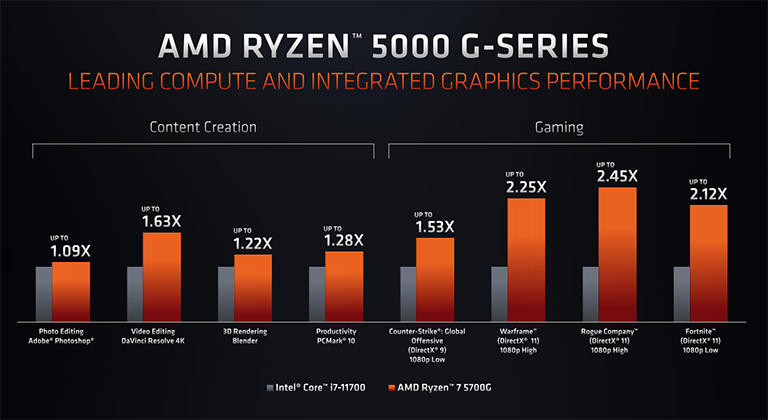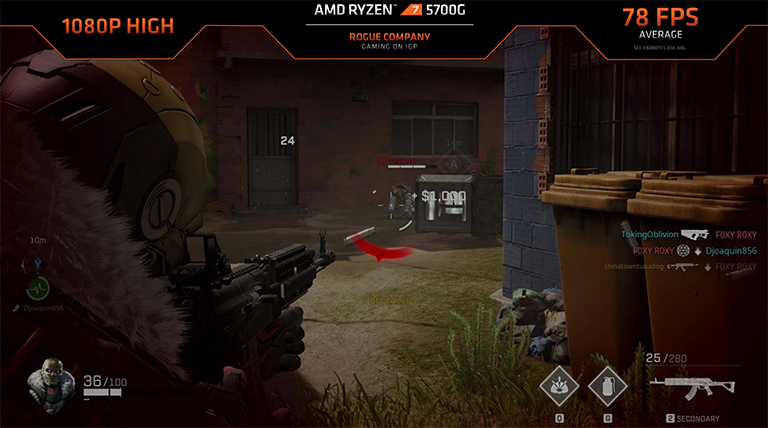AMD is making CPU and mobile graphics announcements for the virtual Computex trade show. The two-pronged approach sees the debut of two desktop Zen 3-powered Ryzen chips housing integrated graphics and the release of mobile Radeon GPUs based on the latest RDNA 2 graphics.
Focussing on the CPUs here, until now AMD hasn't addressed the desktop market which desires strong single- and multi-core CPU performance alongside integrated graphics, thus doing away with the need for a discrete video card.
AMD achieves this by effectively scaling up its latest laptop processors. The Ryzen 7 5700G has already been announced as an OEM part on April 13. Set to be available to consumers by August 5, the 65W chip offers base and boost clocks of 3.8GHz/4.6GHz, respectively, and tacks on established Radeon Graphics in a 512-core configuration (8-CU) running at up to 2GHz.
The CPU portion of the chip isn't quite as robust as the standard Ryzen 7 5800 (OEM), however, because it features only half the L3 cache and a narrower PCIe 3.0 interface. Nevertheless, this desktop-optimised 'Cezanne' processor is an interesting choice at $359 for markets such as HTPC or those only needing light gaming credentials from their PC. Think of it as a mobile Ryzen 9 5900HX in an AM4 package instead of laptop FP6.
Switching down, the same blueprint is used for the Ryzen 5 5600G. This six-core, 12-thread chip copies the socket change and offers base and boost speeds of 3.9GHz/4.4GHz, respectively. This time, the Radeon Graphics use a 7-CU arrangement totalling 448 cores that run at a maximum 1,900MHz. Again, it's mostly like a mobile Ryzen 5 5600HS presented as an AM4 solution.
The chip won't be quite as fast and versatile as the full-on Vermeer Ryzen 5 5600X for the reasons explained above, but at $259, puts further pressure on rival Intel's mainstream 11th Gen CPU stack that usually arrive with integrated graphics in tow.
AMD reckons the Ryzen 5000 G-series can handle casual games well
AMD is filling an obvious gap in its CPU portfolio by releasing chips with Zen 3 cores allied to proven integrated graphics, albeit from the last generation.
What are your thoughts? Do the new APUs sound good, or do you feel there is no need for such products in today's world?









